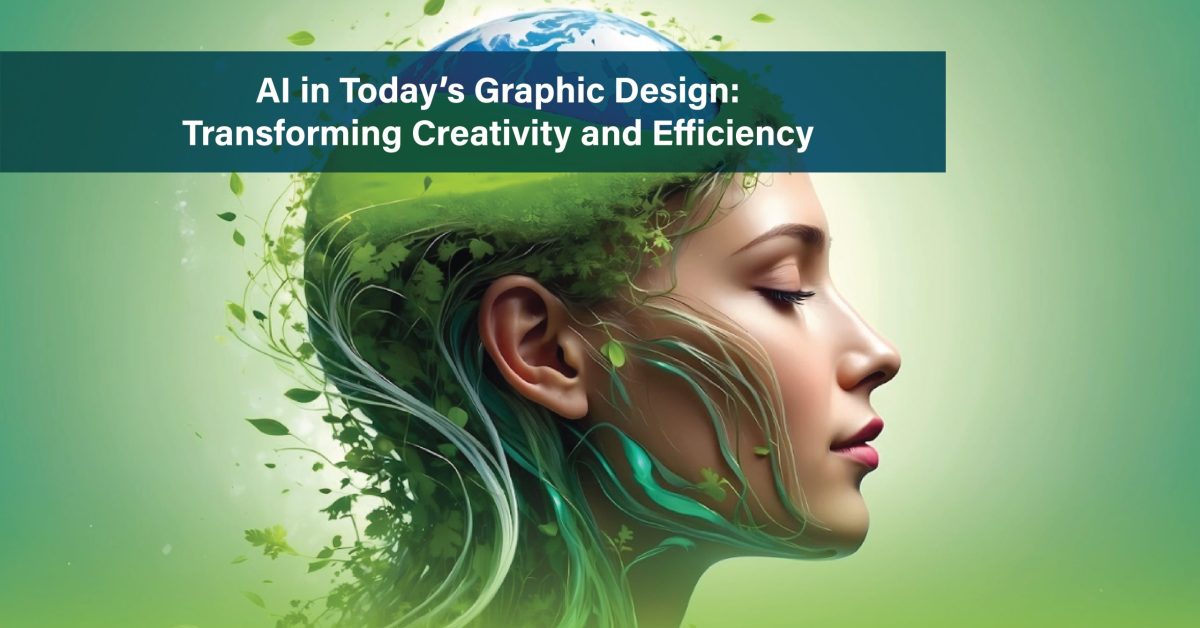The influence of AI becomes evident in the aspect of graphics and is considered to be constructive in enhancing both thinking and working domains. Concerning the design facet, artificial intelligence is altering the previous typical paradigms via such fragments as AI tools to quicken and utilize design procedures.
Enhancing Creativity and Innovation
Others are the MidJourney AI system used in the designing domain, which can help, get hyper-realistic images, and Adobe Firefly, which helps one create fonts from the text. These tools offer a countless number of creative possibilities, which is welcome as far as the introduction of the new appearance and directions are concerned. With the help of AI, one can also brainstorm, as thousands of different concepts can be introduced into the designers’ view within a few seconds, and examples of various concepts and designs can be shown. Furthermore, the patterns of the current designs can be evaluated, and new designs that would probably be appealing to target groups could be recommended.
Streamlining Design Processes
One has to agree that the employment of AI tools makes it easy to cut down on the time that is needed for completing tasks that, if done by hand, may be rather boring. For instance, Uizard is one of the interface designs where the user is allowed to drag and drop the work relating to the website and application design if they have selected the correct template. These areas remain helpful in automating the system to save the designers much time so that they can spend most of their time inputting creatively. Services such as Autodraw, where the drawings that the users draw quickly are enhanced into presentable icons, and Let’s Enhance, where the image enlarges image quality without distorting it, assist designers. Apart from these, they reduce the time that would have been consumed in the process and at the same time increase the accuracy of the entire design production.
Customization and Personalization
The use of AI in the design process introduces another parameter that correlates appropriately, in a sense, to the concerns and consumption patterns of the users. This innovation is also a good boost since it broadens the possibilities for developing the solution. Applications like Khroma are such, where the consumer can choose a color and get a series of colors in designs from the chosen color. On the other hand, AI offers solutions in the form of proposed designs that result from inputs offered by users. The following approach leads to the development of interesting designs that are going to have a one-on-one correlation with the target consumer. Furthermore, it can retain data from the users’ responses and activities, thus improving the design and its components with a positive shift in their performance and appearance over time.
Challenges and Ethical Considerations
However, moving further into the modern world, there are drawbacks along with the negative aspects of AI and the challenges to ethical practices as well. They identified one major consequence of the fact that human designers can be replaced by other designers, eliminating certain jobs. Yet the majority of the professionals interviewed and the majority of what is now written by these professionals in the sphere of design state that with AI, creativity will not be removed from designers, but rather, it will be transcended to a higher level of design. Also, one needs to define the ethical issues arising from the generation of the content automatically, who is the author, and what will be its originality. Such designs displayed by the AI need to be sufficiently distinctive and should not encroach on elements of intellectual property rights to fight off the problem of homogenizing the outputs of the designing systems.
Best 10 Graphic Design AI Tools
Wizard: Very helpful for making web and mobile apps with a simple interface and smart assistant functionalities.
Adobe Firefly: A software that converts text to pictures and makes fonts, all utilities made specifically for Adobe Creative Cloud.
Midjourney: You can create photos on demand in a Discord channel that appear hyper-realistic.
Khroma: Produces beautiful color palettes based on user taste.
Looka: It is very easy to create a logo using the logo generator, which has an archive of editable templates.
Autodraw: This program can make icons from unclean drawings.
Canva: An adaptable tool for different design needs, including AI features such as template generation or picture editing.
Let’s Enhance: Enlarge images without losing their quality.
Designs.ai: Uses machine learning to provide many types of media building blocks in one place.
DreamStudio: A system of generating pictures based on texts that offer various customization options and styles, employing AI techniques to achieve this end goal.
Conclusion
AI has brought forth tools that help designers become more creative and faster while providing personalized solutions. These instruments allow creative minds to break through the limits imposed by their jobs and deliver even at higher rates. In the future, it will be important for designers to catch up with these Affero.AI technological changes.
